August 17, 2011
Our destination after leaving Sainte-Anne-de-Bellevue was the Richelieu River, about 80 miles away. Most of that distance would be spent on the St. Lawrence River, but a portion of that contains the St. Lawrence Seaway, which is a whole navigation project in itself as I will describe later on.
The objective of the first part of this segment of the journey was to be able to get around Montreal. To do that we first had to zigzag across Lac Saint Louis, a very wide, but shallow lake that required us to watch the markers carefully. That wasn't as easy as it sounds because we had to look directly into the rising sun for a good part of the way, and finding the correct markers can be difficult.
This village church looked very pretty in the morning light. Note the bell in the tower. The tolling bells from all these wonderful towers will be one of the pleasantries I will fondly think about when reviewing our time in Canada.
In 1825 the Lachine Canal opened and was used to route vessels around the Lachine rapids adjacent to Montreal. It was about 8 miles long and used 5 locks. Small pleasure craft can still use that canal today to get right into Montreal, but FLUKE is too deep and too tall to be able to use that canal.
In 1959 the St. Lawrence Seaway opened, as a joint venture between the United States and Canada, and uses 2 locks to get around the rapids of Montreal. There are 5 other locks in the Seaway, but they are for other parts of the river which won't affect us on this trip. The locks are 766' long, 80' wide and 30' deep so that all the gigantic seagoing freighters can fit, albeit, tightly! So, the Seaway is even bigger than that, which made for comfortable traveling for us, even when we had to pass the BIG SHIPS.
Shortly after we entered the Seaway, this ship passed us. We were so surprised to be able to see the cargo – windmills, all folded up and stacked tightly. Having seen a couple of big wind farms on the trip already, it was neat being able to see how the windmills were transported.
We had wanted to get an early start because we knew we may get held up at the two Seaway locks we hoped to be able to go through today. Another boat left the dock right before us and sped off, with the same idea in mind. However, 25 miles later when we reached Saint Catherine's lock, that boat was there and had already been waiting for 2 hours to lock through. Commercial vessels have priority, and if any of them are coming, you just have to let go through first.
We all had to wait another 45 minutes before we got into the lock chamber. This ship locked through while we were waiting. You can see it looks like we are right next to it. However, unlike all those other Rideau locks I've been talking about that are so people-friendly, the Seaway locks are just the opposite. The whole area is fenced off, there are lots of security cameras, many instructive “don't do this” or “don't do that signs”, and recreational vessels have to use a dock phone to call the lock and request a lock through; there are no friendly face to face encounters with the lock staff. It makes you feel like you are a sea pest of some kind. Vessels under 20' in length aren't even allowed to go through the locks, so at least we don't have to worry about the real pests of the waterways – jet skis (we call them fleas).
I have to admit, once we were in the huge lock chamber, it felt as though we were just a little barnacle on a big whale. At least the motion in the lock wasn't rough to where we got pushed and pulled into the wall.
There are several bridges that you have to go under, but because they have to accommodate the big ships, they are not an issue for recreational vessels.
When we came to the second lock about 10 miles away, Saint Lambert, we only had less than an hour's wait. The locks charge $25 for recreational vehicles, and since they are federal locks, not part of Parks Canada, our seasonal lock pass doesn't cover them, so we had to fork over another $50 for the two locks.
Fortunately, we had already locked through before these guys had gotten to the lock. This is a submarine being transported in a dry dock by two tugs, one fore and one aft. They have to use the two tugs for this so that they can maneuver around corners. It would have been interesting to see them lock through, but we wouldn't have been allowed to get up to the lock to see them enter anyway. It appeared as thought the submarine was being scrapped because it had been stripped of all the hardware and had some kind of recycling sign on the conning tower. Shortly after we passed this, we saw a gigantic marine scrapyard facility, so it may have just come from there.
After we exited the Seaway, we pulled into Port de Plaisance Marina in Longueuil to finally pump out our holding tank. The high school girl working the dock was exceptional in her willingness to help get us tied up and pumped out. If all people her age worked like she did, there would be much hope for the future. She liked being able to have a chance to practice her English, saying most of her practice comes from watching American TV shows with her mother. I gave her some York Peppermint Patties, and she wanted to know if they were some kind of American candies. The water hose we had to use to fill our water tank was so thin and had such low pressure, we ended up eating lunch at the dock and still had to wait another half hour for the tanks to finally fill.
The distinctive double spires of this elegant church were visible for quite a distance along the waterway.
You have to look quickly to see this stone windmill on the east shore in the village of Vercheres. The village dates back to 1672, and this is the windmill style from that time. The house in the background appears to be of similar construction.
I think we only passed a total of 3 cruising boats the whole time we were on this section of the St. Lawrence. This little tug was interesting since it had been converted from a working boat to a pleasure boat and given that unusual paint job. Notice that the dinghy has a matching paint pattern.
After traveling 70 miles, our longest water cruising day in Canada, we pulled off to anchor in Chenal Sud, near iles de Contecoeur right next to a Refuge D'oiseaux (bird sanctuary). Remember, the St. Lawrence River is flowing from Lake Ontario out to the Atlantic Ocean, so we have been traveling with a good current pushing us. It is important to be able to get out of that current to be able to safely anchor. So, we had to find a place where there was some land between the main channel and the mainland, and this little channel afforded safe protection from both the current and main traffic flow of the river, where the big sea going vessels were still sharing the waterway with us. Being waked by them is no fun, so you want to make sure you find a place where their wake can't give you a bad roll.
After we were settled for the evening, this local village boat went by. I thought they looked as interesting as they thought we looked, and we both took pictures at the same time. The whole night stayed as still as the water in the picture, so we had a quiet night's sleep and were eager to begin our adventure on the Richelieu River.
Tuesday, September 13, 2011
Subscribe to:
Post Comments (Atom)
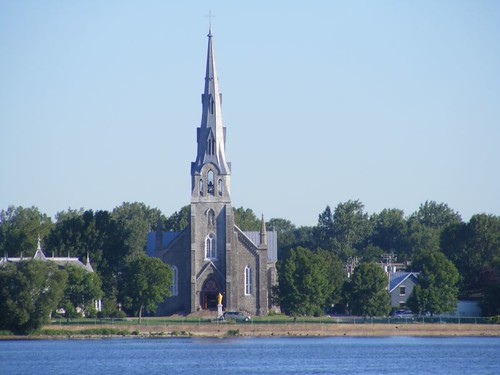
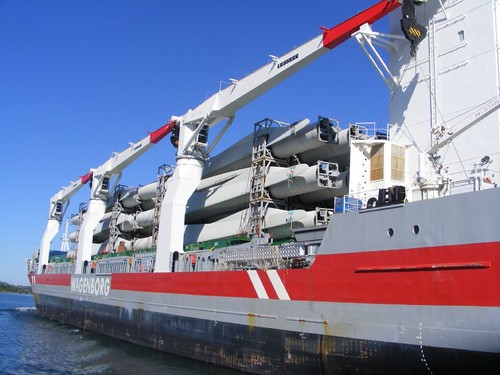
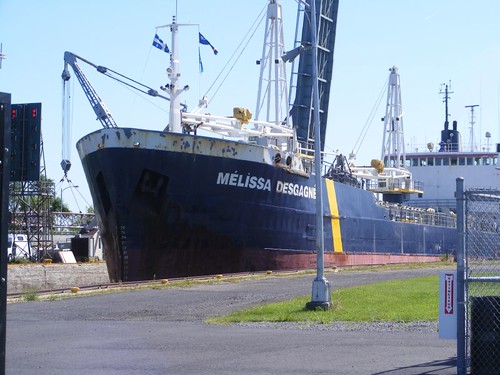
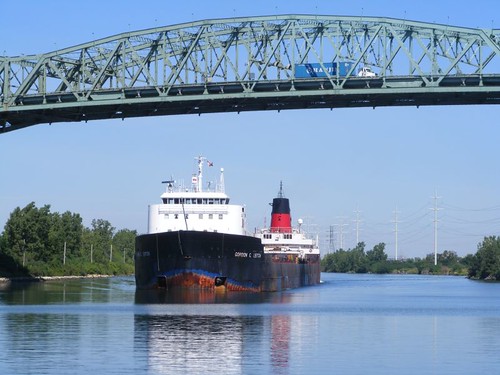
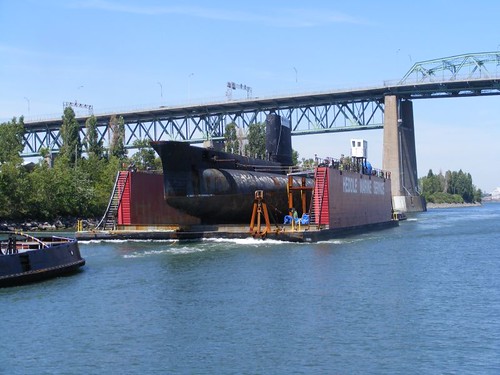
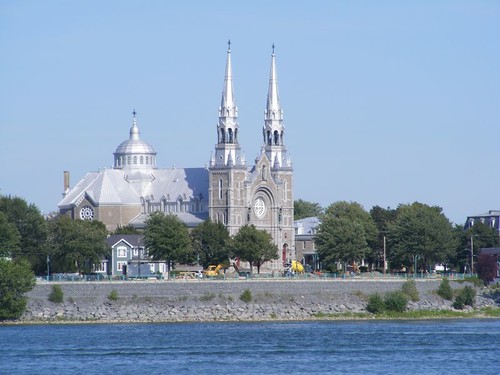
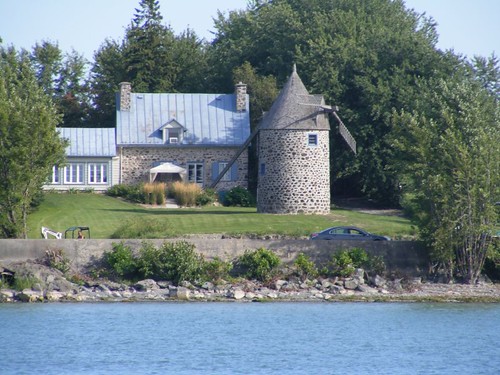
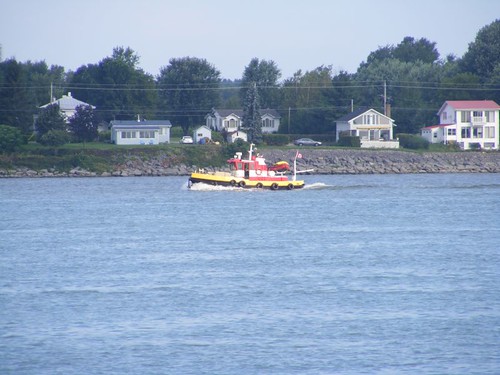









0 comments:
Post a Comment